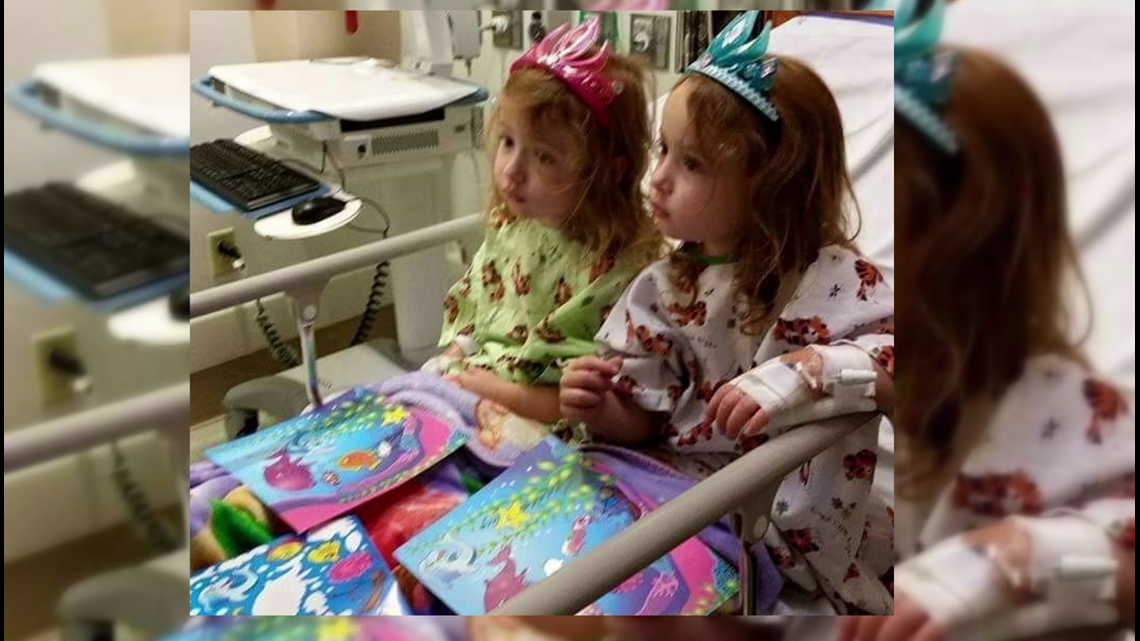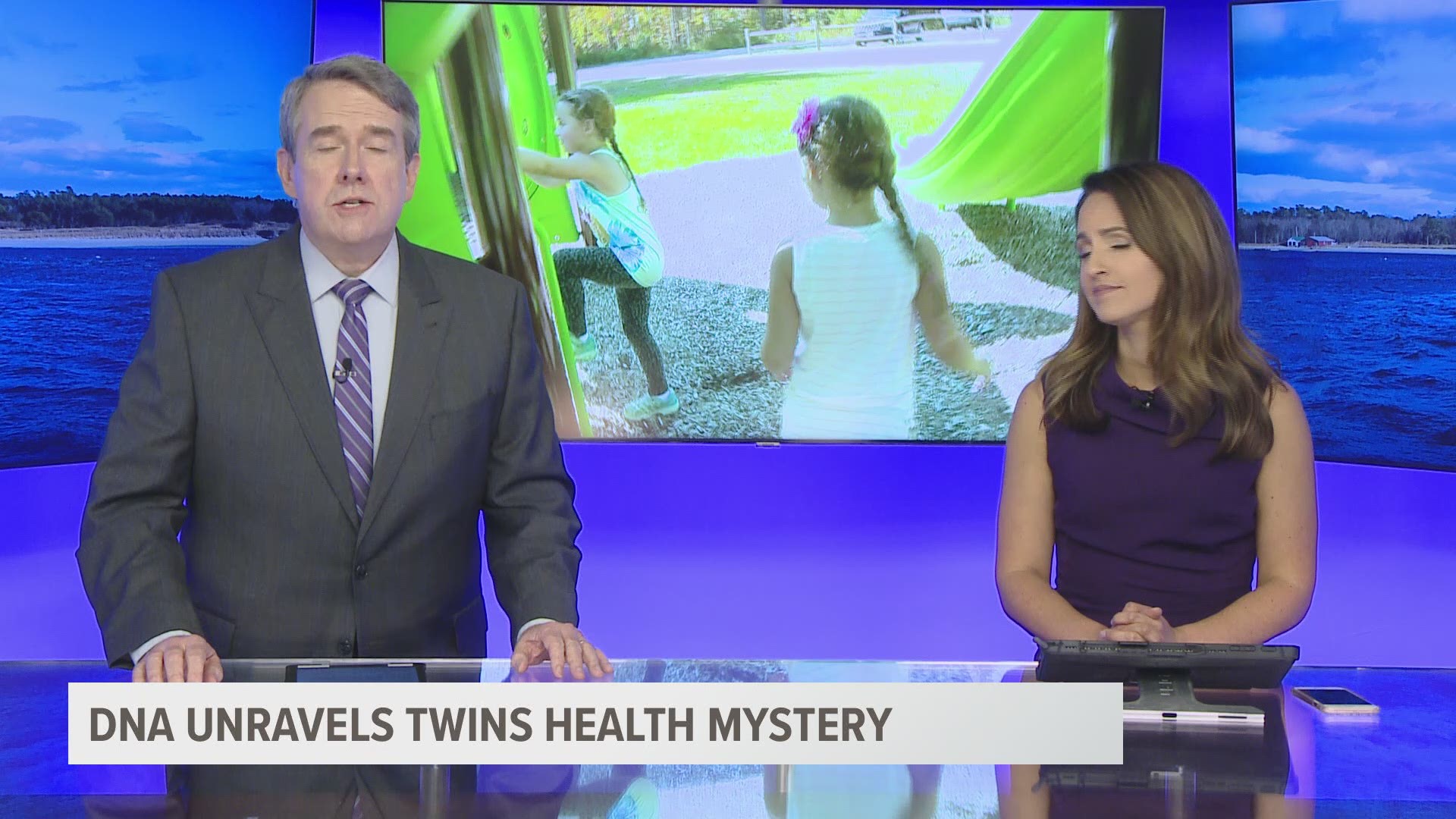WINDHAM (NEWS CENTER Maine) — DNA sequencing is helping unravel the mystery surrounding identical twin girls -- who have several rare inherited diseases.
Bella and Julia Doyon, both 7, love to play dress up and romp on the playground for hours. But looking at these sisters jump and laugh in the fall sun it's hard to imagine what they are battling inside their bodies.
Nine months after they were born, serious respiratory problems landed both babies in the emergency room multiple times.
Fast forward to when the twins were a year and a half.
"Julia started having trouble walking, running and jumping," said Tracy Doyon, the twins' mom.


Within a few months, both toddlers had joint pain at night and their teeth started falling out by the root. X-rays showed the girls had dense bones and were misdiagnosed with a bone condition. The girls, now almost 3, suffered from multiple fractures in their feet and legs along with constant bruising.
Tracy in the meantime kept pushing for "exome sequencing," a costly and lengthy test which determines the order of DNA in a patient's genetic code. The testing showed the twins had two rare inherited diseases, bringing more questions than answers.
"Each of those conditions are all life-threatening, progressive and in some ways a degenerative disease," the mother said.
One of the diseases causes the girls not to make enough calcium and phosphorus to build healthy bones. The other condition can lead to tumors in all of the body's major organs.
Julia was also diagnosed with a genetic blood disorder, which required lab work and frequent trips to the hospital.
More than 2 years ago, the girls were able to start a breakthrough treatment approved by the FDA: enzyme injection treatment. But after five months, their mom ended the treatment because it led to calcification in their bones.
Then more heartbreak: Follow-up DNA testing discovered another genetic condition, a skeletal disease so rare there are only two other cases in the world. There is no cure for any of their conditions.
The twins are regularly monitored by specialists and get MRIs. Both receive physical therapy. Julia still wears braces on her ankles.
Despite how healthy they appear on the outside, the girls know they are different from other kids. Questions that may never be answered, but hope remains that treatment or a cure is possible in their lifetimes.
For more information on Hypopohosphatasia (HPP), go to softbones.org
For more information on Tuberous sclerosis (TSC), go to radiopedia.org
For more information on exome sequencing, go to ghr.nlm.nih.gov/

